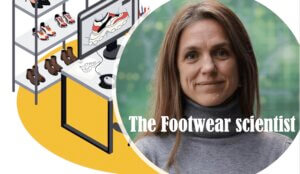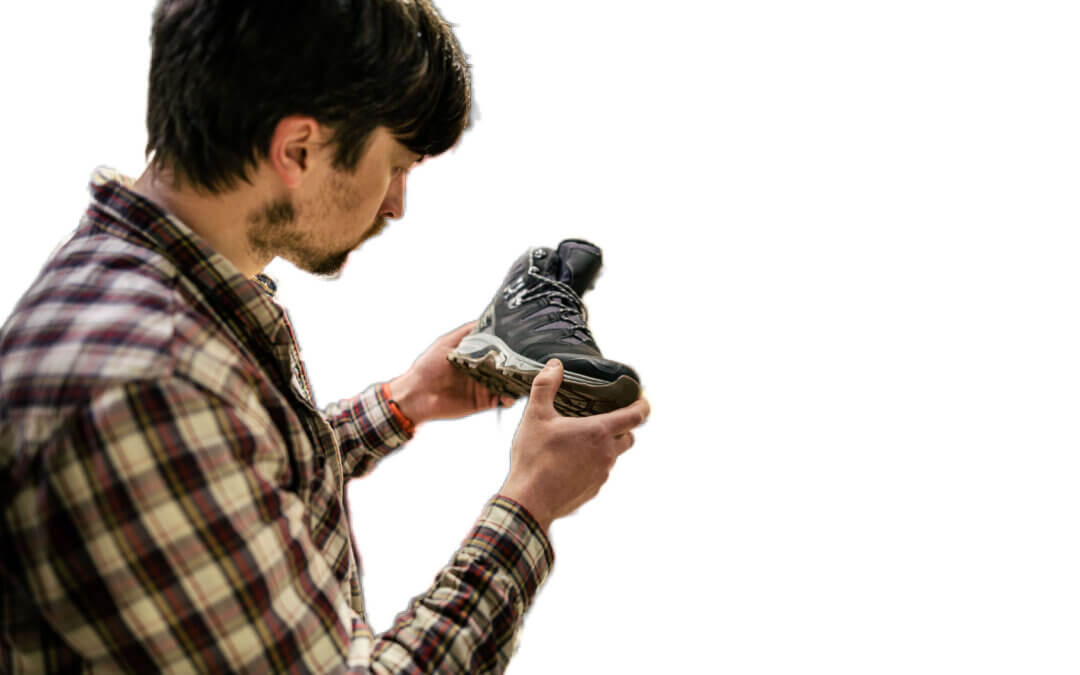Selecting the Right Shoe
Dr Helen Branthwaite shares her thoughts on why podiatry can offer more to patients
 Podiatry is the branch of medical practice devoted to the assessment, diagnosis and management of foot and ankle pathologies. A diverse profession that cares for patients with complaints ranging from complex foot health needs impacting on circulation and tissue viability to assessing the function of the foot when competing in a sporting arena.
Podiatry is the branch of medical practice devoted to the assessment, diagnosis and management of foot and ankle pathologies. A diverse profession that cares for patients with complaints ranging from complex foot health needs impacting on circulation and tissue viability to assessing the function of the foot when competing in a sporting arena.
Specialism within the profession creates a rich choice of job roles, from podiatric surgeon to wound care, management and leadership of a services to research scientist and academic to name a few. Yet, the profession is verging on a recruitment crisis that will see Podiatry engulfed into other healthcare services if not become a thing of the past. The benefits podiatry brings to patient care are enormous, even if not well published. Don’t worry too much though, as there are strategies in place to reignite interest in careers in Podiatry and develop the skills of the existing work force to provide a smooth escalator of career choices from support workers to consultant positions. Yet as a profession we need to own the foot and anything associated with it, particularly footwear.
The Importance of Footwear Image
It is no surprise that footwear lives on the foot and depending on the footwear characteristics of the shoe will impact the way that the lower limb works. Although its primary function is protection from the environment, footwear is utilised as a styling accessory and plays a significant role in the image someone creates. As fashion dominates the creation of most footwear, shoes are endorsed by many to sexualise females, empower business people and in the sporting fields there are emerging trends that wearing the right shoe will improve your performance. There is also a genre of footwear styles that can be used to treat lower limb complaints.
How equipped are podiatrists though in assessing, diagnosing and treating someone who has picked the wrong shoes for their feet and how can we as a profession lead the way in supporting footwear choice to improve foot health?
Comfort is a dominant feature in deciding whether footwear is suitable for the wearer [1], but in the absence of being able to identify pain in the foot, how do you ensure the footwear is correct? There are tools to explore the length and breadth of a shoe as a measure of fit [2], yet the stiffness and flexion angle of the sole unit may be more a significant factor to consider. Fastenings are always advocated as being essential to keep the shoe securely fitting the foot, but some people need to quickly change their shoes or are limited in securing a fastening – Nike FlyEase. Nike GB recently reinstated a shoe specifically designed for those who find reaching their shoes difficult, as well as individuals who wear ankle foot orthoses, where putting the foot in the shoe is a challenge.
There is no clear one style fits all for footwear and when assessing shoes the function, purpose, comfort and foot biomechanics need to be evaluated prior to associating poor choice to pathology. Footwear changes can significantly help people manage their complaints and utilising shoes as an intervention can provide valuable treatment options.
Hoka HOKA® Running Shoes for Men and Women | Official HOKA ONE ONE® UK, recently endorsed by the Royal College of Podiatry, developed running shoes for mountain running. The combination of a carbon fibre plate, rocker sole and cushioning foam midsole allows for extreme running performance but also can be applied to assist patients with ankle OA or forefoot pain as the shaping and styling of the shoe assists in movement. Similarly, Wearatech Non slip shoes and slip-resistant shoes from WearerTech , created using the science of biomechanics developed shoes with researchers at the University of Salford, that improved the forces endured whilst standing for long periods of time. Development of individualised insoles, specific to the wearers role, helps for a unique footwear fit experience to be created.
Footwear has also been developed for specific pathologies with a direct link to improving the experience of the wearer. Calla Shoes for Bunions & Wide Feet UK » Calla (callashoes.co.uk) developed their range of footwear to accommodate bunions whilst maintaining the level of style and fashion for the wearer. Continual development of functional benefits aim to ensure that when using the shoe maximal benefit is gained. Management of knee arthritis has also benefitted from the APOS shoe Homepage – AposHealth® UK where a system of unstable sole features create variability in movement patterns at the knee, alleviating pain associated with the condition.
Podiatry as a profession should be at the forefront of developing and testing innovation for footwear as the patients we treat will benefit most from changes. Increasing awareness within the profession will assist in connecting industries with podiatry leaders as well as creating viable conversations at ground level between patient and practitioner. Footwear should be one of the key treatments podiatry should utilise and the scope of care for everyday wear is enormous.
About Helen
She has now spent over a decade researching the challenges of everyday footwear for patient choice and function, working with industry to improve function, choice and image. She has applied the outcomes from this work to clinical practice and continues to treat patients with musculoskeletal pain related to biomechanics dysfunction at the Footcare clinic, Macclesfield Cheshire. UK.
![]()
[1] Branthwaite, H., Chockalingam, N., Grogan, S. and Jones, M., 2013. Footwear choices made by young women and their potential impact on foot health. Journal of health psychology, 18(11), pp.1422-1431.
[2] Ellis, S., Branthwaite, H. and Chockalingam, N., 2022. Evaluation and optimisation of a footwear assessment tool for use within a clinical environment. Journal of Foot and Ankle Research, 15(1), p.12.
Thanks for reading ‘Footwear Needs to Sit Within the Podiatry Profession’ by Dr Helen Branthwaite
Published by Busypencilcase Communications (Est. 2015) for ConsultingFootPain.

Published 11 August 2023

Recent Comments